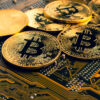As technology advances, we are less surprised by the unique things that make our lives easier. Today, it won’t be news that you can book NU car rental in Las Vegas, New York or Chicago online in just a few clicks. Also, this applies to the aerospace industry, which is one of the main fields for the emergence of ultra-modern developments.
Although its innovations are familiar to a small number of people, their significance in terms of the future of all mankind is simply enormous. Among them, the following achievements came into the view of scientists…
Parker solar probe
This is one of the latest developments of NASA. The probe is designed to study the outer corona of the sun. It’s assumed that in the future it will approach the surface of the Sun at a distance of 6.2 million kilometers, but even now the device is breaking records.
In 2018, Parker approached the Sun at a record distance of 15 million kilometers, while reaching the speed of 343 thousand kilometers per hour. However, this is not the limit. According to scientists, the device will accelerate to a speed of about 700 thousand km/h. Therefore, this is officially the fastest thing ever built by humanity.
Although at such a distance from the Sun the probe can heat up to almost 1,400°C, most of the scientific equipment on board will remain relatively cold. All this is thanks to a 2.5 meter wide heat shield. The shield is made of the lightest carbon foam, so that it weighs only 70 kilograms.
In general, the probe is designed to collect important data for a comprehensive study of sun activity. The launch of Parker took place on August 12, 2018, and the mission will last until 2025.
CIMON space robot assistant
Recently, Airbus announced that the CIMON (Crew Interactive Mobile CompanioN) has completed the first phase of space testing. The robot looks like a flying sphere with a display and has a size slightly larger than a soccer ball. On our planet, its weight is about 5 kilograms.
The body of the robot is created by 3D printing. The machine is equipped with artificial intelligence and should serve as a personal assistant to personnel of space stations and ships.
In general, the work of CIMON is similar to Siri or Alexa assistants, but the space robot is more specialized. A knowledge base is loaded into it, which can help astronauts during various operations in orbit. CIMON can provide medical care or perform scientific experiments. However, this robot is part of an experiment designed to find out how effectively people will interact with robots in space.
TESS Space Telescope
TESS (Transiting Exoplanet Survey Satellite) is a space telescope designed to detect exoplanets, that is, planets orbiting other stars. The telescope was launched on April 18, 2018 on the Elon Musk’s Falcon 9 rocket.
Over the next two years, TESS will scan about 200,000 thousand nearby stars and try to find planets orbiting around them. The most interesting are earth-like worlds – rocky planets located not more than 200 light-years distant from Earth. Scientists suggest that the scan will detect at least 20 thousand such planets. The data on them will help to better understand the principle by which worlds are formed, including our Earth.
InSight Station on Mars
The InSight machine, which launched from Earth on May 5, 2018, successfully landed on Mars. InSight is an autonomous station designed for geological exploration. The device will monitor the active seismic processes on Mars, and will also try to drill a five-meter well for soil analysis.
These data will help to find out the origin of the ‘Marsquakes’ and giant Martian volcanoes, and also – to detect liquid water in the soil.
Low power radar
Traditional radars are no longer effective when it comes to a small aircraft that moves at low altitude. Meanwhile, many companies are beginning to actively use drones to deliver goods. This movement also needs to be controlled.
Raytheon introduced the Low Power Radar, also known as Skyler. The radar itself is quite compact and it looks like a square with a side less than a meter. In doing so, it uses a radar system used in modern fighters. Such radars can be placed on television towers, cell towers and even the walls of skyscrapers.
The Airbus Zephyr
The Airbus Zephyr is a huge solar-powered unmanned aerial vehicle. It has been known for more than 10 years. Since 2007, it was developed by the British defense company QinetiQ, and later the project went to Airbus.
Recently, Airbus announced that Zephyr set a new world record. Zephyr flew at an altitude of more than 21 kilometers, far above transport aircraft and clouds.
The wingspan of the vehicle is about 25 meters, but the weight is not more than 75 kilograms. The solar panels on the wings and the smart power supply system allowed it to stay in the air for 25 full days in a row. Landing occurred after 25 days, 23 hours and 57 minutes of flight.











